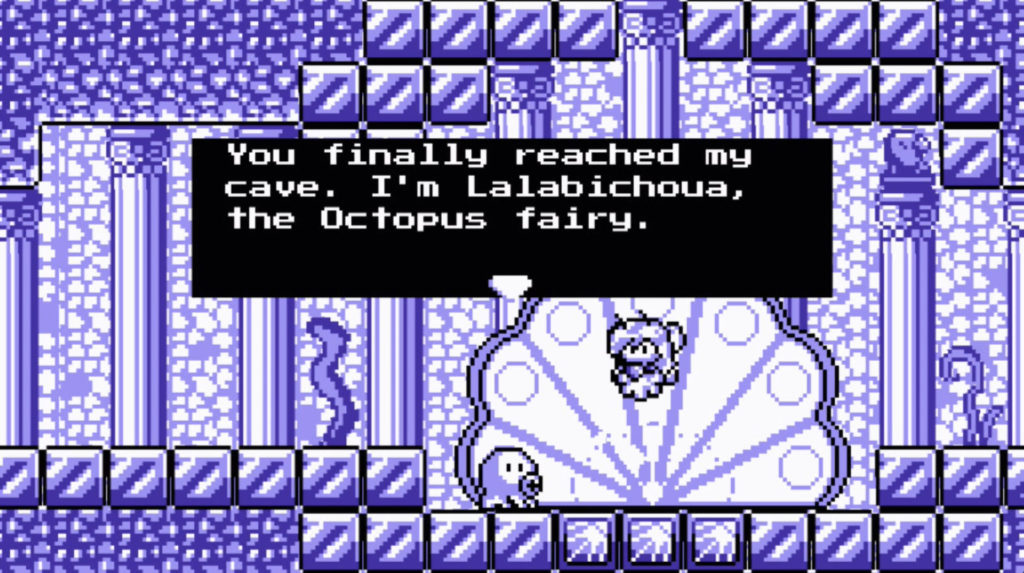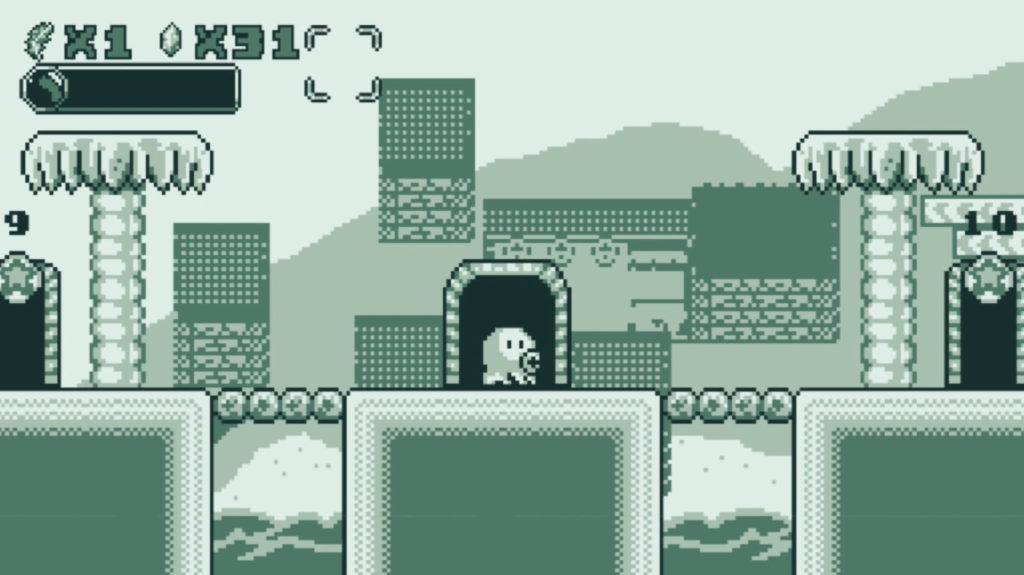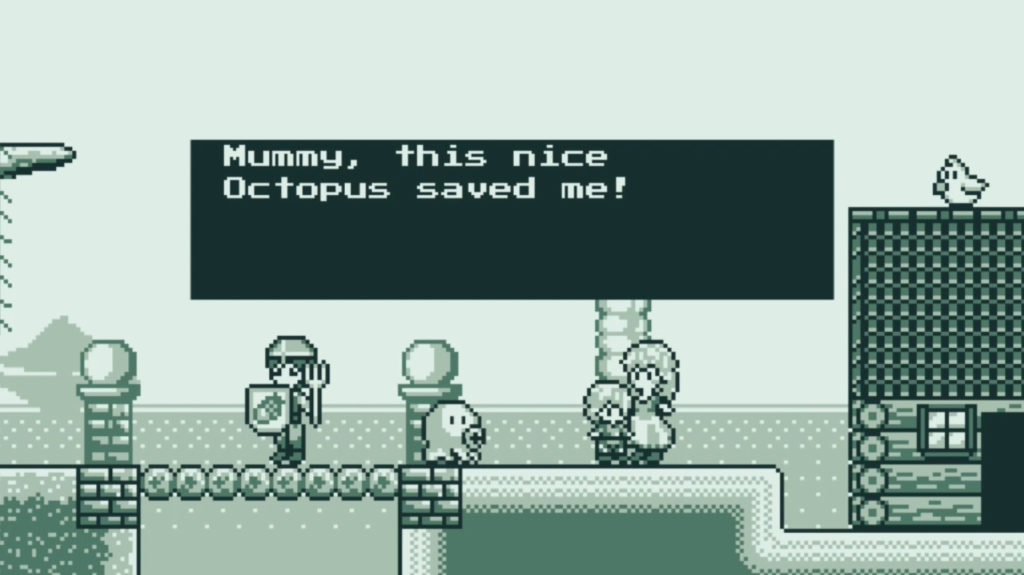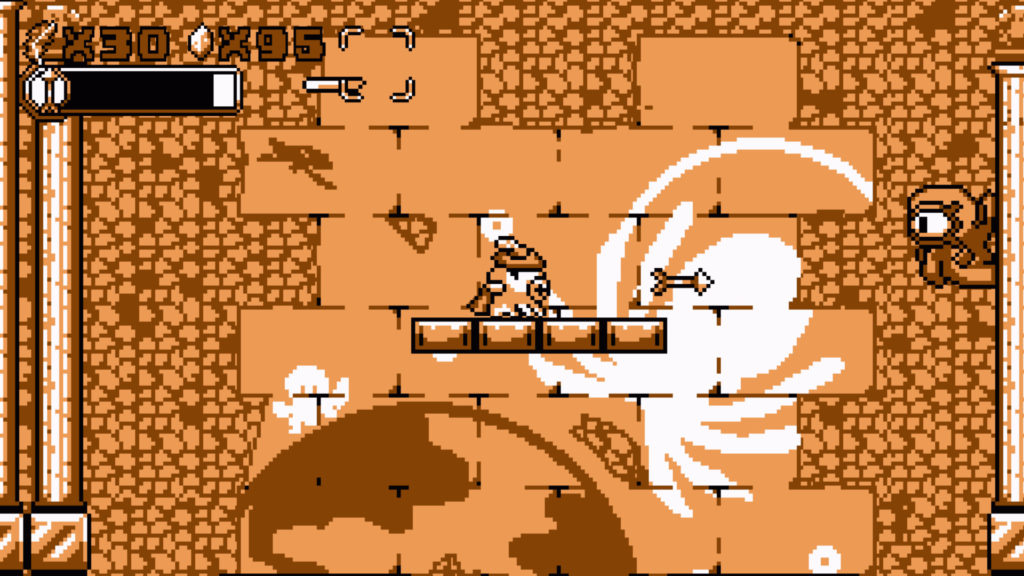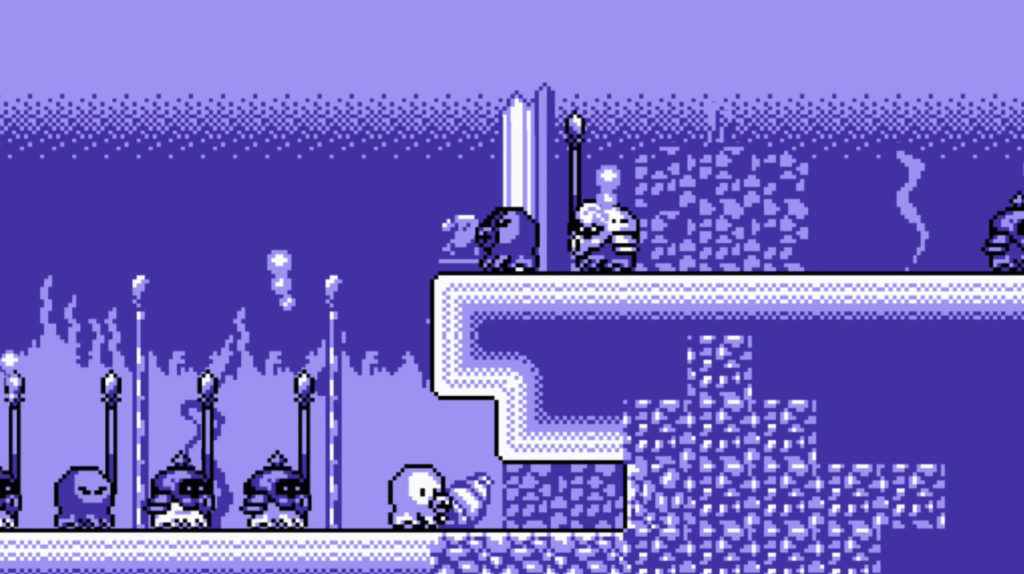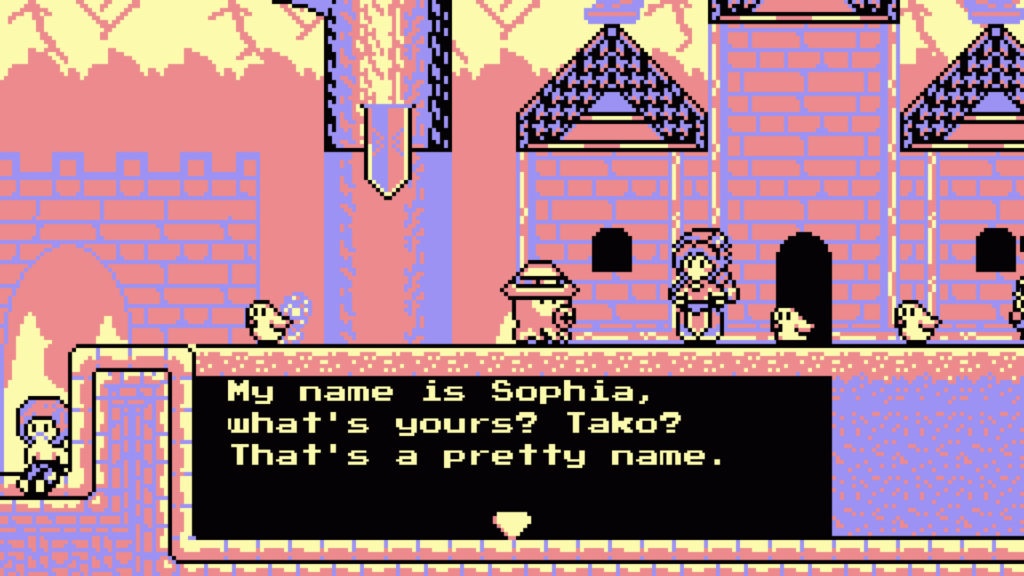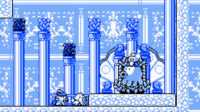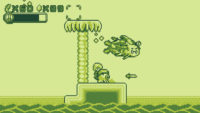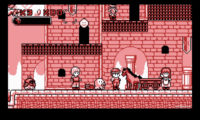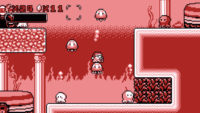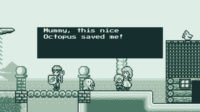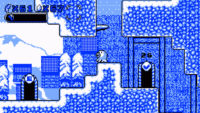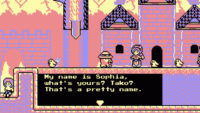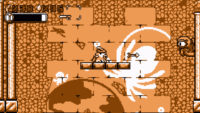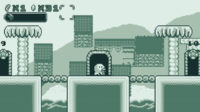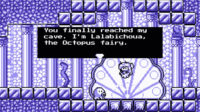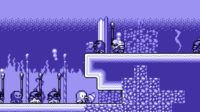Game: “Save me Mr Tako”
Save me Mr Tako: Definitive Edition!

Originally released back in 2018 by Nicalis Inc., Save me Mr Tako was pulled from all digital stores following a disagreement between developer Christophe Galati, and then-publisher, Nicalis Inc. Three years on, we’re happy to say a Definitive Edition of the title is being released by Galati on Steam, and Limited Run Games is offering both digital and physical copies on Nintendo Switch too! We got the chance to grab our Switch and dive beneath the waves to experience the game for ourselves.
At A Glance
| Visuals | 6 / 10 |
| Sound | 8 / 10 |
| Gameplay | 9 / 10 |
| Overall | 8 / 10 |
| Positives | + Fusion of Kirby, Mario & Metroid in an octopus-shaped package |
| + Masterclass in retro styled visuals and sound | |
| + Rich and engaging story that belies the cutesy style | |
| Negatives | – Easy to lose track of side quests |
| – Some players might find gameplay a little repetitive | |
| – Previous owners will have to buy another copy to get Definitive content |
A game about one octopus and his wish to bring people together, Save me Mr Tako: Definitive Edition (Tako) has a pretty unique story that sounds more than a little ridiculous when you say it out loud. The story follows Tako, a silent protagonist who must work against his vengeful brother, Bako, in order to stop a war between the octopuses and humans and bring peace to the world. Blessed by a protective spell from a magical fairy, Tako must take to the land and unpick generations of bitterness between human kingdoms and forge alliances in order to shift the lopsided balance in the world.
A love letter to 8-bit to games on the Game Boy, Tako is overflowing with retro charm that hits you right between the eyes from the moment you switch it on. There’s cute, chunky sprites and simple animations that replicate what you’d expect from a 1990’s handheld title perfectly. To further hammer the point home, the game is displayed in palettes of only three colours at a time, with these palettes changing based on the environment you’re playing through. Forests are displayed in a trio of greens, while beach scenes are reflected by hot reds and yellows, and underwater levels shimmer in shades of blue. Galati really pushes the 8-bit style to it’s limit with his impressive use of brightness and lighting too, with countless examples of using his three colours and clever pixel density in displaying darkness falling or breakthrough shafts of light.
As a final touch of nostalgia, Tako offers you the choice to play with a frame drawn around the action, reminiscent of playing a Game Boy game on the SNES using a Super Game Boy attachment, all those years ago. There’s a great selection of frames available, each adorably decorated with characters and enemies from the game; for fans looking for that full nostalgia hit, this is a must-try option in my opinion. Graphics-centric players might find the visuals hard to swallow, but for an old timer like me they represent a masterclass in retro-gaming reproduction that should be applauded.
The sound too is beautifully throwback, with catchy level and character themes that conjure images of some of the best games from the Game Boy era, with the ever-suave Lou-Lou’s theme being a particular stand out. There’s plenty of little in-game sounds that really add to the experience too, from the simple chirrups and grunts of the enemies, to the more memorable singing of the lovely Lucia.
While I’ve played a lot of games similar to Tako, I honestly don’t think I’ve ever played a game quite like it. The levels follow a simple platform formula; you have to avoid pitfalls and belligerent wildlife while navigating various caves that link areas together with the ultimate goal of reaching the door at end. Between levels you steer Tako through a number of hub screens that represent the specific kingdom that he’s travelling through – you’ll go back and forth between these as the story unfolds with new doors opening as Tako takes a new route through the kingdom. It’s a really nice approach that genuinely gives the impression of going on a journey despite the ‘map’ only being a few screens long.
The gameplay itself is a wonderful fusion of Kirby, Super Mario and, somehow, Metroid, placing Tako in some pretty rarified air indeed. It’s as easy as one button to jump and another to shoot ink that stuns your enemies, with some nostalgic features like holding ‘up’ or ‘down’ to scroll the screen to see what is around you. You have to be precise with your jumps and have a quick trigger finger though, as one hit and you’ll lose a life and have to restart from a checkpoint. While that sense of nostalgia might be clouding my judgment a little, I honestly think it’s so enjoyable by simply being very good at what it does; at its core Tako boils down the simplest elements that make a game enjoyable and executes them all at a high level.
Livening up the mechanics a little, and where the Metroid likeness comes in, are Tako’s hats. Each hat bestows a different ability on Tako and allows you new attacks or ways to access areas that had previously been unavailable to you. And not to limit their usage to only in-level effects, many of the hats are used as part of the story, inspiring different dialogue from characters if you’re wearing the right one when you speak to them. Again, it’s hardly groundbreaking stuff but it’s a feature rarely utilised in a game of this style, and so it really stands out as a unique way of packaging RPG elements into a more traditional platformer.
Every few levels a door will open on the hub screen that leads to a town or other place of interest, and these are where the majority of the story unfolds in Tako. Perhaps fooled by the cutesy sprites or the hyper-retro packaging, I was not expecting such a well crafted and deep story as the one that Tako provides. As Tako travels through each kingdom a host of new characters are brought into the mix, and their histories and personalities make a real impact on how the tale unfolds. The kindly Prince Evan and ruthless octopus general Sako were particular favourites for me, showing off some well thought out backstories and progression that I really hadn’t expected when I started the game.
The story and characters are genuinely more akin to something out of Final Fantasy than the Kirby-inspired gameplay, and I was blown away by how well it’s been executed. With some humorous highs and some pretty bleak lows, the plotline of Tako had me gripped, pulling me into the world and having me care about the characters more than the ‘silly’ premise would have ever suggested.
Tako isn’t perfect, of course, but for me, its flaws are few and far between. While I fawn over the graphics style, there are occasions where the simplistic nature makes it tricky to see an enemy lurking against the background, leading to some frustrating moments. And like any RPG/adventure game, there’s a lot of NPC’s in Tako and a fair number of them give you side-quests to complete; without any kind of story log or quest screen, it’s easy to forget who asked for what, or even that you had a quest to complete at all. This leads to a lot of wasted time backtracking through towns and talking to tonnes of characters simply because you couldn’t remember who needed that fish that you just collected. And while you can talk to your otter friend Lou-Lou for a hint, they’re offered randomly, meaning you sometimes have to endure the same few hints a couple of times before finally being given the one you want. Tako really did force me into nitpicking here.
There will be critics who cite the gameplay in Tako as somewhat samey and often unchallenging, but there’s enough bite in the later levels that you can’t entirely sleepwalk through them. The Ydor temple in particular triggered my Ocarina of Time Water Temple PTSD – whilst being a huge pain in the backside I have to tip one of my many hats at the level styling and design. I’d argue that there’s plenty here to keep you interested without having you pulling your hair out every five minutes which makes for an enjoyable balance.
Originally planned as a simple patch to the original game, the Definitive Edition makes several quality of life changes that really improve the overall experience, but because it’s a re-release after being delisted, it does mean that previous owners need to buy a brand new copy in order to experience the changes. In Galati’s defense, the developer had hoped to offer previous owners discounted, or even free copies of the Definitive Edition, but sadly, neither Steam nor Nintendo were able to facilitate his request.
So what does the Definitive Edition bring that wasn’t in the original? Well, on top of the general fixes that all patches bring, there’s now the option to play on an easier difficulty setting known as ‘Heart Mode’, described as ‘for players who want to enjoy the story’. Tako can take three hits before dying rather than the usual one when playing in Heart Mode, which makes it a nice accessibility option for sure. There’s more colour palettes and frames to choose from than in the original game too, as well as the very welcome hint feature I discussed earlier.
And while it’s certainly a shame that fans will have to shell out full price for a second time in order to see the improvements, I’d encourage anyone thinking of doing so to go the whole-hog and pick up a physical copy from Limited Run Games. You can check out their line up here; I’m sure you’ll agree that they do awesome work!
In hindsight, I can’t remember the last time that a game so thoroughly surprised me. Save me Mr Tako: Definitive Edition is a delightful experience that will appeal to old-school platform and RPG fans alike – drawn in by the promise of-old school platforming and fantastic throwback visuals, it was the wonderful storytelling and characters that truly left their mark.
It’s like they always say, “Come for the pixel art octopus, stay for the epic storyline”. Or something.
In the interest of full disclosure, the publisher provided VGamingNews with a copy of the game in order to conduct this review.


